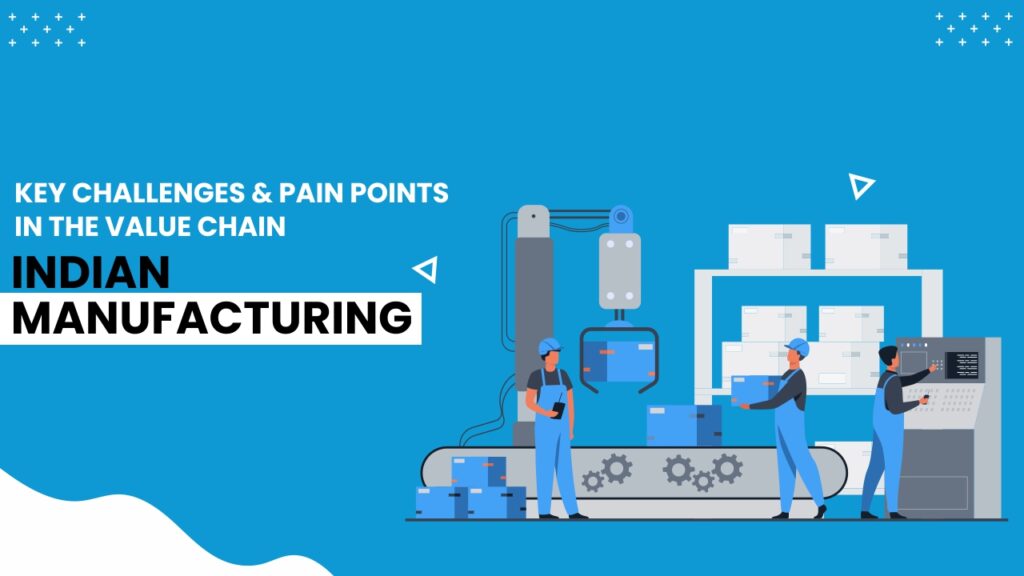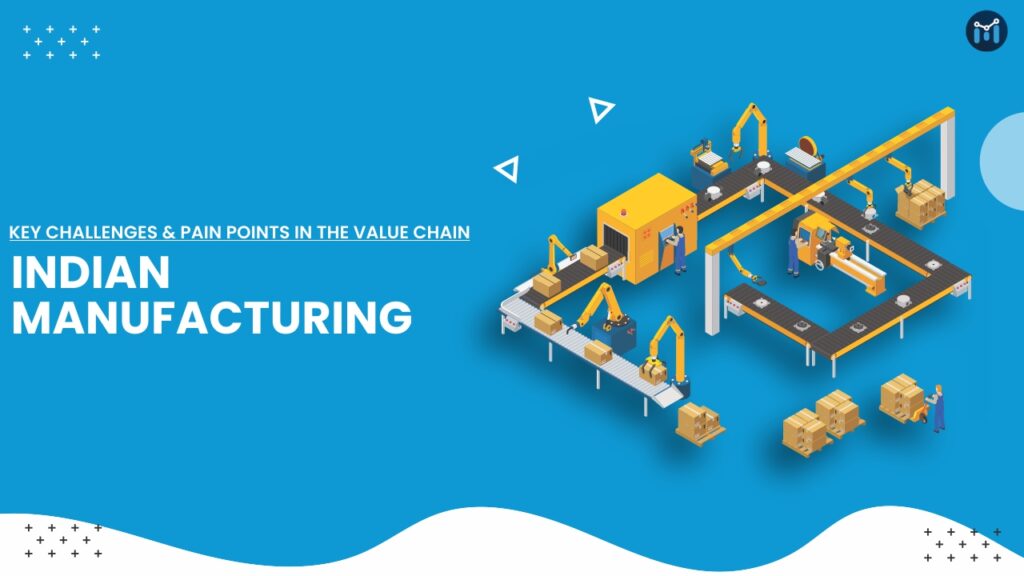Industry indicators and Key statistics:
Manufacturing contributes significantly to India’s GDP, accounting for 17.4%. It has a potential to reach USD 1 Trillion. Indian Manufacturing singularly added to 19% of its Gross Value Add, however, the capacity Utilization stood at a dismal 66% in FY 21.
Indian Manufacturing Scenarios:
- The Sector significantly contributed to the economic growth post-Independence and saw India setting up large enterprises and small and medium enterprises.
- Industry estimates that there would be close to 2,45,000 odd factories. (https://www.ceicdata.com/en/india/manufacturing-industry-nic-2008-all-industries/manufacturing-industries-number-of-factories).
- These factories would be of various sizes (No. of Units); scale of operations (Turnover, Degree of Automation) and various verticals (Automotive, Consumer Durable and Goods, Apparels & Footwear, Chemicals, Electrical & Electronics, Metals & Mining). Out of this significant number, barely 2-3 % account for large enterprises (TO: 3000Cr +), there would be a significantly “fat belly” (MSME) (100Cr + < 3000 Cr) and a long tail of small firms (1-10CR & 10-100Cr).
- While the sector is fragmented, the problems faced by decision makers in the Manufacturing Industry remain more or less universal.
- The problems faced by Indian Manufacturers essentially stem from various Macro & Micro factors. Macro: competition from large Chinese Manufacturing Ecosystem, not so friendly govt policies (Trade and taxation), Resources (Material & Man) swayed away the global supply chain in favor of China. Ability to overnight scale up infrastructure and thereby capacities have contributed for rise of China in Manufacturing.
- Micro: In ability to attract and retain talent (most engineers prefer working in IT sector), Pressure on Margins, Lack of incentives from Govt (until recently PLIs), Technology (No Organic development in technology and there is reliance on acquiring age-old technology from Russia, Germany, Japan and US) have hindered real progress in Indian Manufacturing Industry

Way forward: Pain Points & Mitigation
Today the major imperative of Indian Manufacturers is to remain profitable as they are facing severe Margin Pressures. These margin pressures arise from rising costs (Utilities, Compliance, Direct Labor and Material etc.), competition (Local & Global) and inaccurate revenue forecasts.
- Technology: While Technology in Manufacturing either slips out or Manufacturing is late to adopt technology, but now manufacturers feel that it will be a major game-changer for survival and profitability. Large Enterprises are still able to cope up with technological advancements and adoption but the MSME and SME are greatly handicapped in doing so. Please have a look into our blog on Ground-Breaking Benefits Of AI And ML In Manufacturing Industry so it can give more knowledge about technology in manufacturing industry.
Technology can help on the following fronts of the manufacturing Value chain:
- Normalizing the Supply and Demand Side. By Gaining access to Market Places on various B2B and B2C ecommerce platforms, Manufacturers will be able to manage supply and demand better. Thus Inventories (read Cash) can be better managed, a major problem for MSME and SMEs. Logistics spend (Transportation & Warehousing) can be brought down.
The other impact area is:
- Optimizing Operations – Conversion of Raw Materials to Finished Goods. Today this piece of the puzzle is a strong focus area for manufacturers. As this is where Costs get converted to Revenues. This for many manufacturers remains an eternal “black-box”. Being able to figure out problems will enhance yield and thereby profitability.
- Digitization (IIoT- Industrial IOT and Web of Forms- for record keeping and Dashboards/Intelligence on Demand) promises to solve this problem for manufacturers. Most of the popular ERP solutions from large software companies have significant “Up-front Cost”. These solutions are difficult to implement and MSME and SMEs have not been able to benefit from it. Cloud based SaaS solutions with no/low upfront costs help in proliferation of such solutions.





